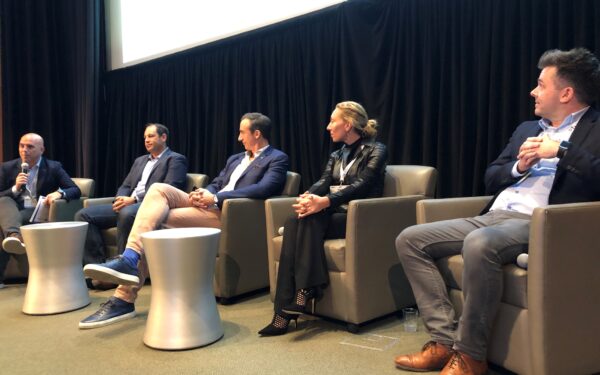
- L-R: Cris de Luca, Omri Shor, Bozidar Jovicevic, Georgia Mitsi, Spencer Jones
With digital therapeutics becoming a growing component of the medical care ecosystem, it’s only natural that partnerships between the companies developing them and the drug industry should see growth as well. Probing the topic of whether such partnerships are a “match made in heaven,” the panelists also explored a bigger question: Are they an opportunity worth billions, or simply hundreds of millions of dollars?
The panel, at the DTx East conference at Harvard Medical School in Boston, brought together MediSafe CEO Omri Shor, Sanofi global head of digital therapeutics Bozidar Jovicevic, Sunovion Pharmaceuticals senior director for frontier business Georgia Mitsi and Sandoz vice president for global medical affairs Spencer Jones. Johnson & Johnson global head of digital innovation Cris de Luca served as moderator.

With the Rise of AI, What IP Disputes in Healthcare Are Likely to Emerge?
Munck Wilson Mandala Partner Greg Howison shared his perspective on some of the legal ramifications around AI, IP, connected devices and the data they generate, in response to emailed questions.
Of course, the bridging of the digital therapeutics and pharmaceutical worlds is nothing new. In November 2017, the Food and Drug Administration approved Otsuka Pharmaceutical’s Abilify MyCite, which consists of the psychiatric drug Abilify (aripiprazole) and an ingestible sensor designed to signal that the medication was taken.
When Jovicevic posed the question of whether drug-digital partnerships are worth hundreds of millions or a billion dollars to the audience, Shor raised his hand at “billion.”
MediSafe’s major focus is improving medication adherence, and in an interview on the sidelines of the conference, Shor pointed to a case study from the company whereby it found that its customized digital programs for thyroid, diabetes and cardiovascular diseases improved adherence by between 8-20 percent. If a drug has sales of $1 billion per year, he said, then better adherence could increase that to $1.2 billion.
“If you capture that opportunity to make a difference, then you get to much higher than a billion-dollar opportunity,” Shor said in the interview.
Mitsi was skeptical that it would be a billion-dollar opportunity, but added that the motivating factor should be the interests of the patient than simply money.
“In certain therapeutic areas, digital therapeutics can actually be more effective than the pharmacological approach,” she said, pointing to some areas of mental health as examples.
Another important consideration brought up in the panel was whether digital therapeutics should always be partnered with drugs or operate on their own. Jovicevic remarked that digital therapeutics could be either standalone products prescribed by doctors or combined with drugs in the form of an app or sensor. Mitsi added that she didn’t want to see digital therapeutics limited to combinations with drugs.
“I’d rather create a patient-engagement platform available to all patients rather than limiting the value of a product to one of our own pharmacological products,” she said.
Photo: Alaric DeArment, MedCity News














